 7
7AI Agent Visualization Review Asynchronous Multi-Agent Simulation
Overview
AI agent research have attracted a lot of attention with the rapid development of Large Language Model (LLM) and Reasoning (RL or CoT Chain of Thought) technology. Generative AI Agents use LLM to plan, act and reflect on the memories from the environment as well as the interactions from other agents, just like the environment in Stanford's Generative Agents paper "Generative Agents: Interactive Simulacra of Human Behavior". The simulation environment usually consists of a environment (Such as A Small Town) and multiple AI Agents taking actions to make plans and achieve goals. Before making plans and taking actions, agents will retrieve related information from memories, which is a list of descriptions of the timestamp and exact events, such as "2023-02-03 Someone is watching a movie...". During multi-agents simulation, each agent will have its own timeline and their actions are usually asynchronous. In this blog, we will give a review of the tools of AI Agents Visualization, especially in the situation where there are multiple agents with asynchronous actions during the simulation.
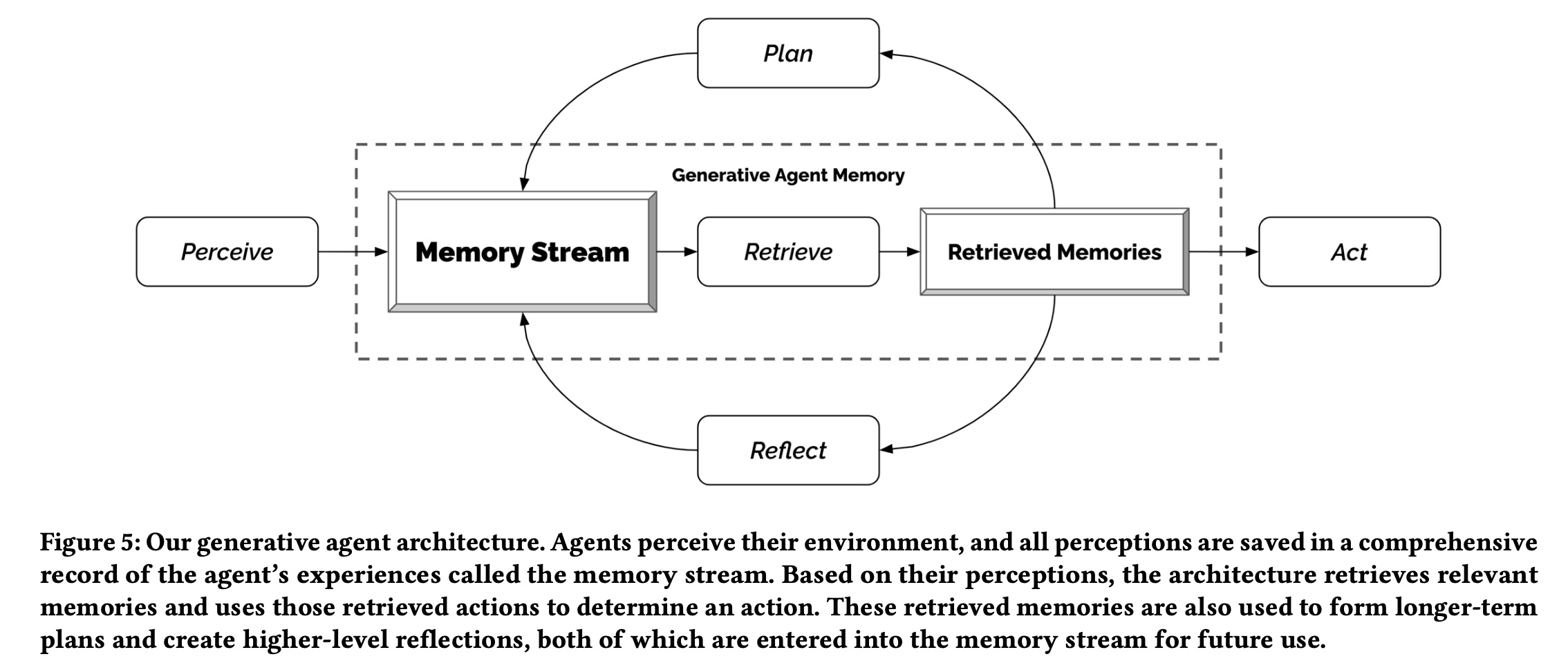
1. DeepNLP AI Agents Online Visualization Tool
website: http://www.deepnlp.org/workspace/agent_visualization
Example of Multi-Agent Simulation Timeline Visualization
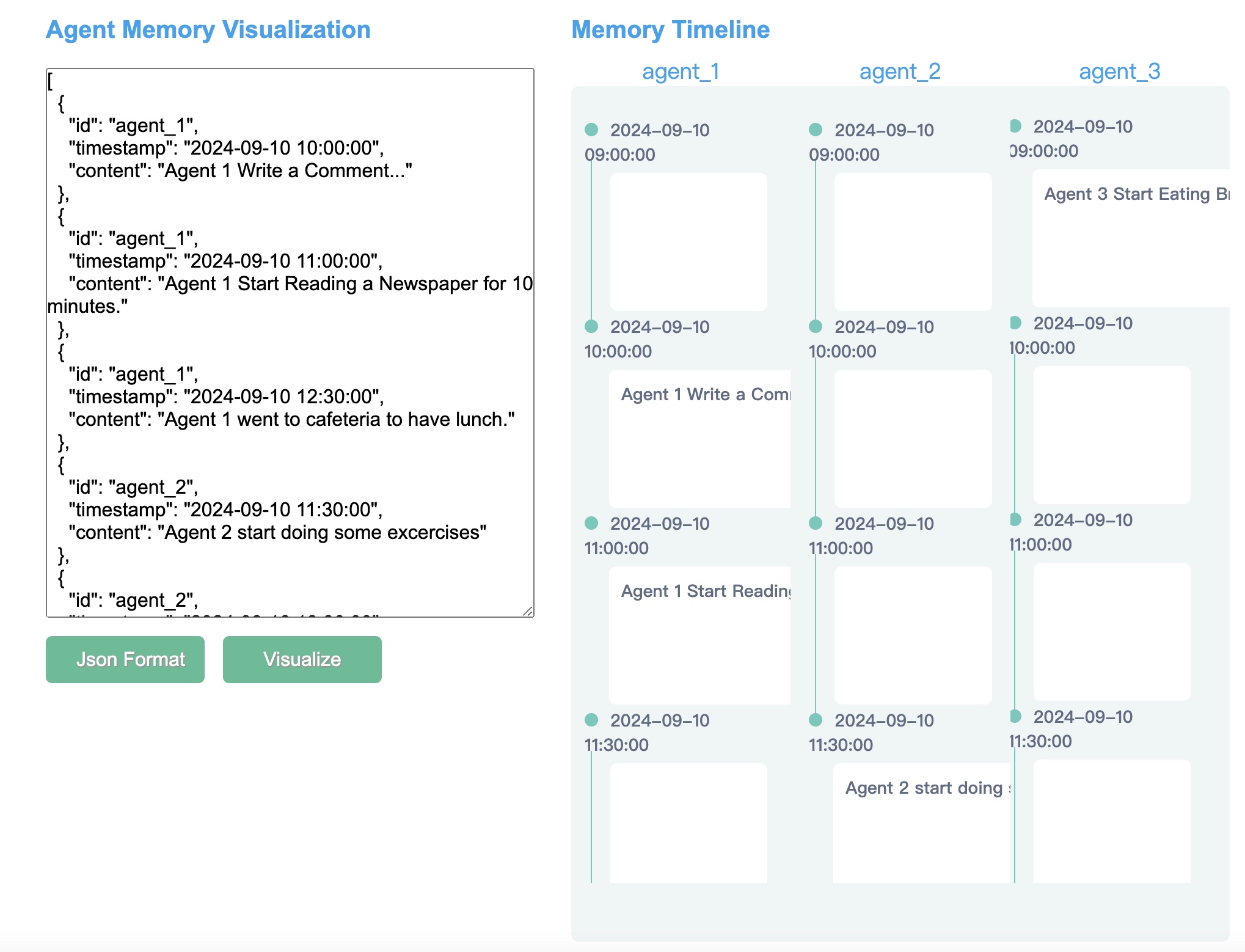
Users can copy and paste the list of json data as in the below format and copy and paste in the input box. The list of json each contains three keys: id, timestamp, content. "id" key denotes the id of the agent, "timestamp" key denotes the timestamp of the memory or events, and "content" denotes the short description of what happened as saved in the memory. Noted that these list of json can be collected from multiple agents, and the visualization tools will group events to each agents and sort the events in chronological order of the timeline.
Inputs Json Format
[
{
"id": "agent_1",
"timestamp": "2024-09-10 10:00:00",
"content": "Agent 1 Write a Comment..."
},
{
"id": "agent_1",
"timestamp": "2024-09-10 11:00:00",
"content": "Agent 1 Start Reading a Newspaper for 10 minutes."
},
{
"id": "agent_1",
"timestamp": "2024-09-10 12:30:00",
"content": "Agent 1 went to cafeteria to have lunch."
},
{
"id": "agent_2",
"timestamp": "2024-09-10 11:30:00",
"content": "Agent 2 start doing some excercises"
},
{
"id": "agent_2",
"timestamp": "2024-09-10 13:30:00",
"content": "Agent 2 went shopping..."
},
{
"id": "agent_3",
"timestamp": "2024-09-10 09:00:00",
"content": "Agent 3 Start Eating Breakfast..."
}
]
2. GPTeam from LangChain
website: https://blog.langchain.dev/gpteam-a-multi-agent-simulation/
github: https://github.com/101dotxyz/GPTeam/
GPTeam is a multi-agent simulation environment. Every agent within a GPTeam simulation has their own unique personality, memories, and directives, leading to interesting emergent behavior as they interact. The simulation for each agent is Asynchronous and each agent loop consists of several steps: Agent.observe, Agent.plan, Agent.act, Agent.reflect. And each agent loop is concluded as a simple process of observe → react → act → reflect loops. After the simulation, the logs are printed and users can view and compare the events of different agents (note: the logs render the agent activity from most newest to oldest, so you should read from the bottom up).
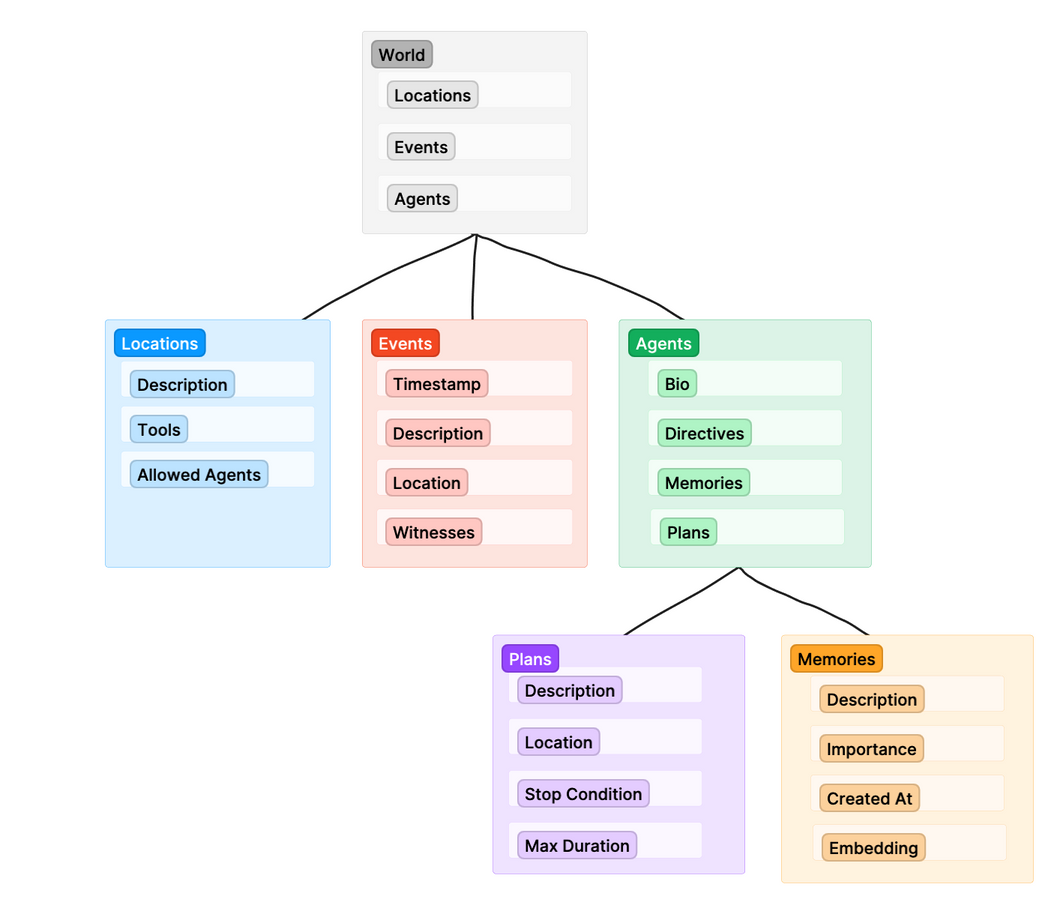
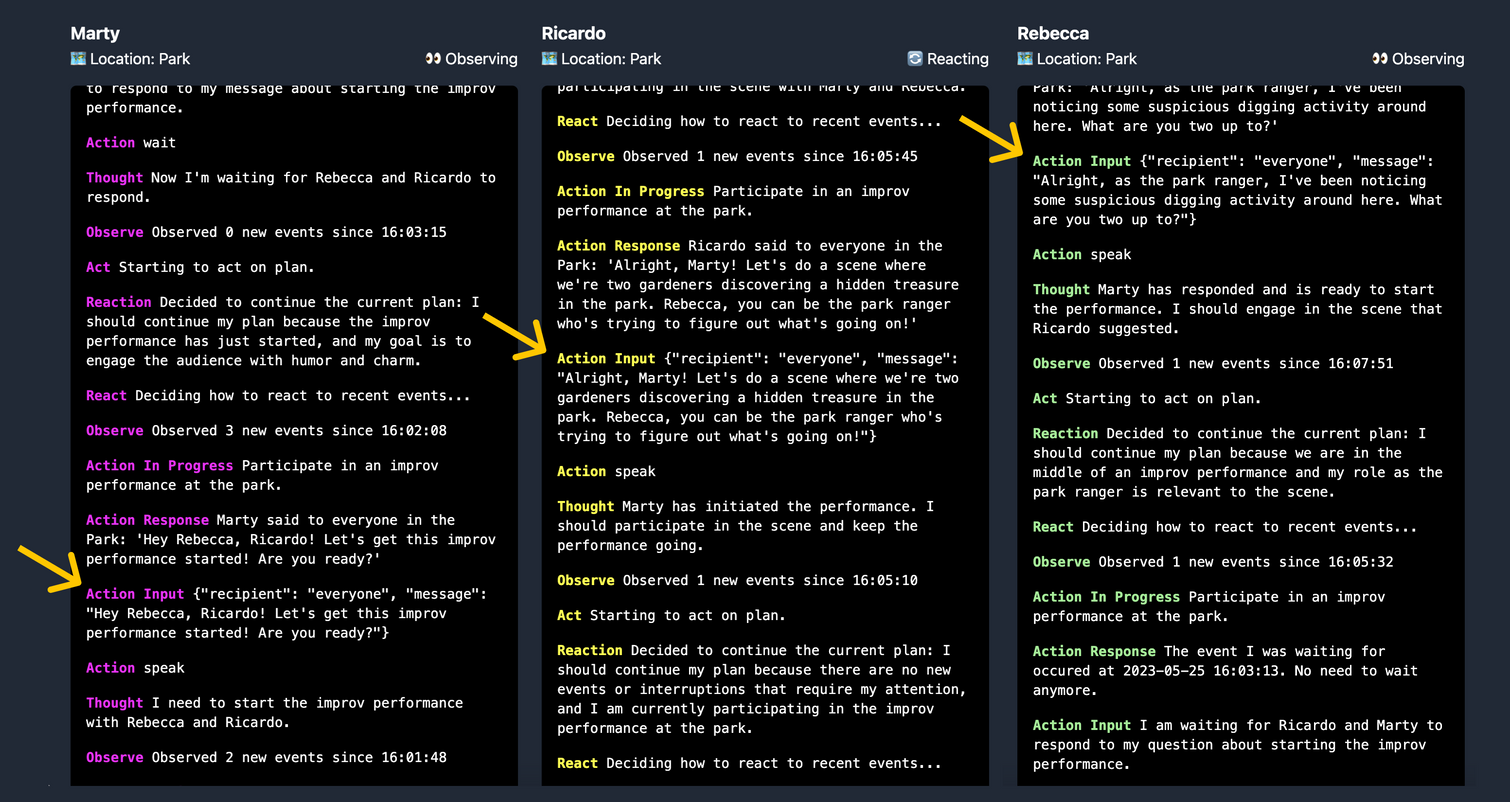
3. AutoGen
website: https://microsoft.github.io/autogen/docs/topics/code-execution/cli-code-executor
AutoGen is multi-agent conversation framework developped by Microsoft. Developer can initialize a multi-agent conversation session by an initialization step, such as "message=What date is today? Which big tech stock has the largest year-to-date gain this year? How much is the gain?". After initialization, the proxy can find a visual illustration of how the user_proxy and assistant collaboratively solve the above task autonomously.
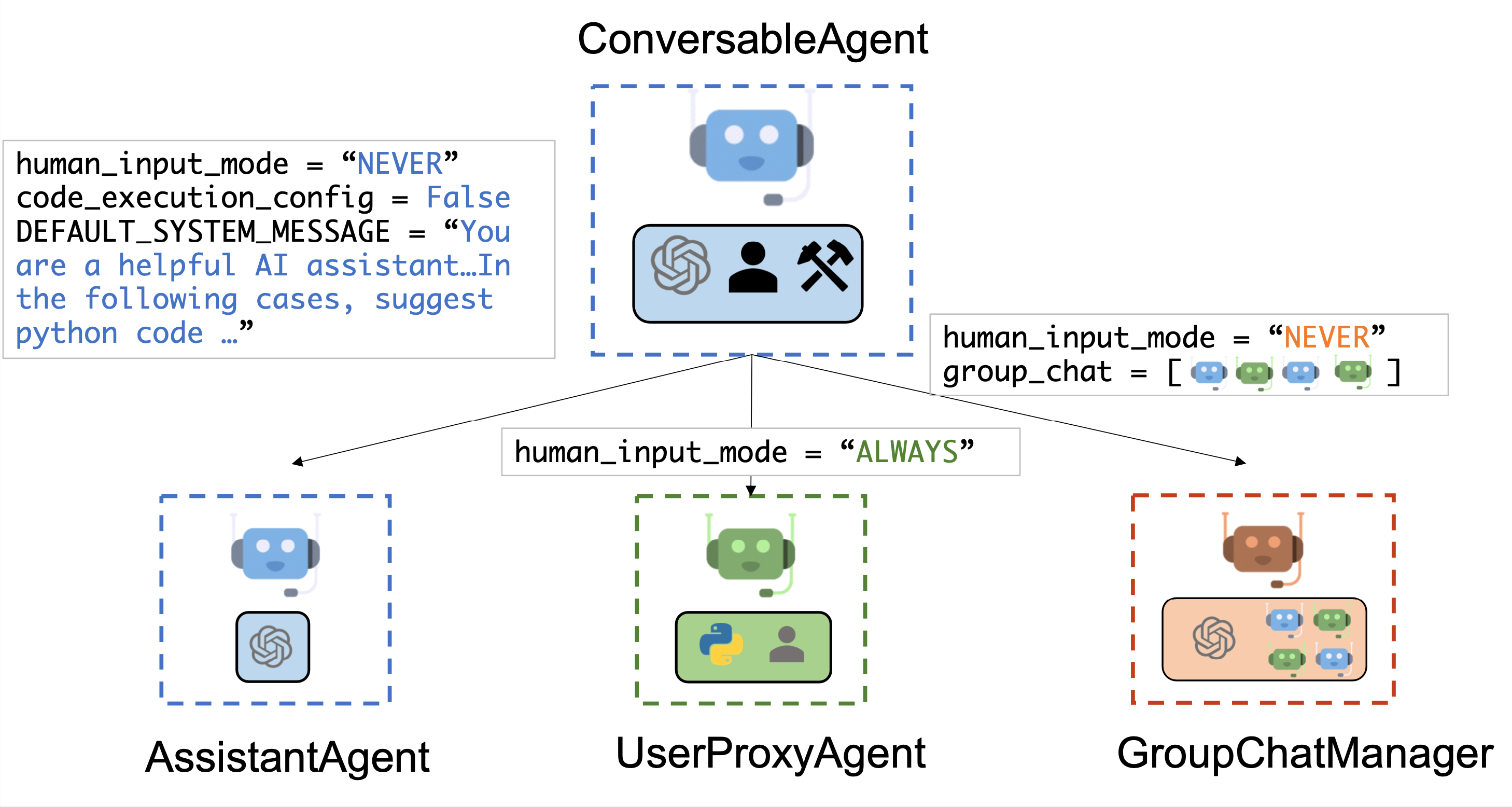
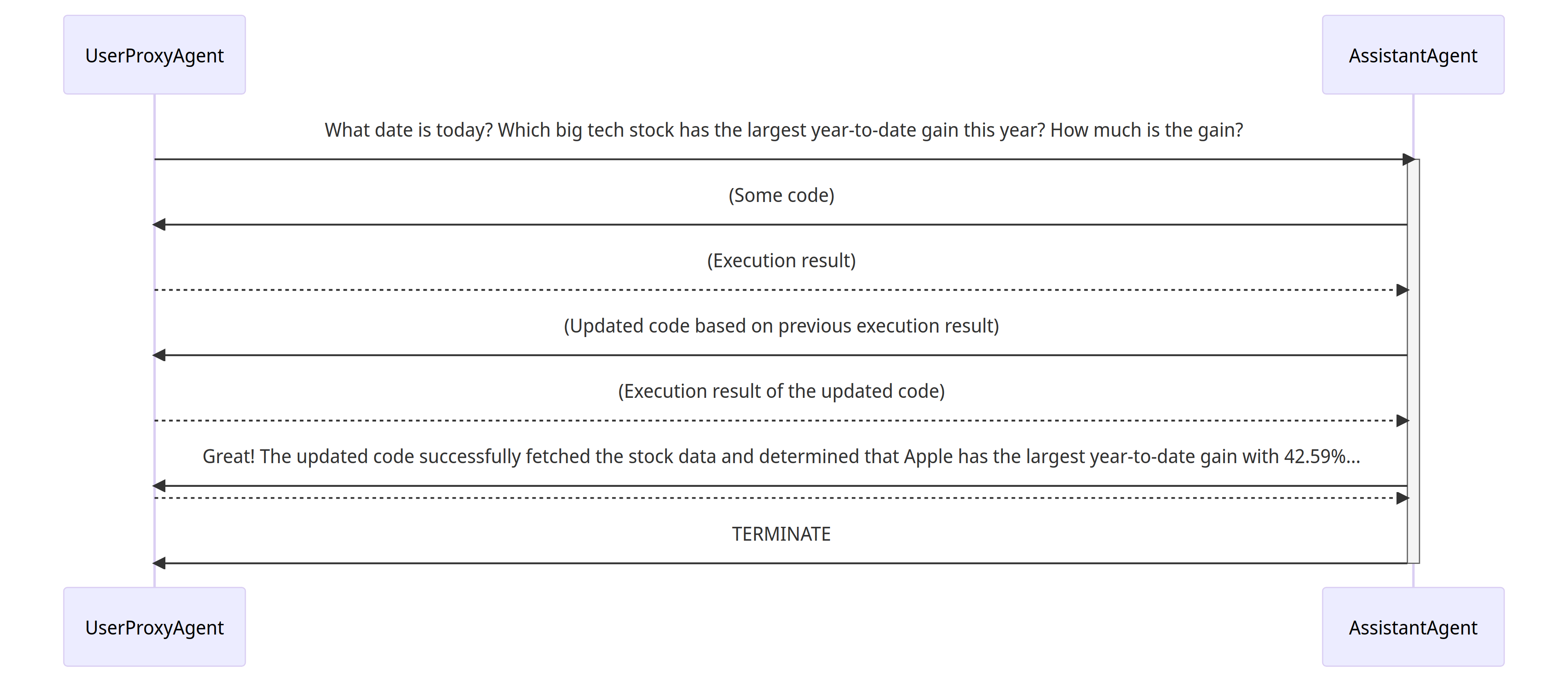

4. AutoGPT
Github: https://github.com/Significant-Gravitas/AutoGPT
AutoGPT is a powerful tool that lets you create and run intelligent agents. These agents can perform various tasks automatically, making your life easier.
Related Reading
https://github.com/microsoft/autogenhttps://microsoft.github.io/autogen/docs/Getting-Started
GP-Team Multi-Agent Simulation
AutoGPT
DeepNLP Dialogue Visualization & Simulator